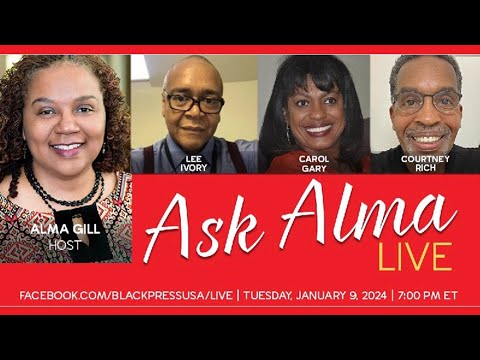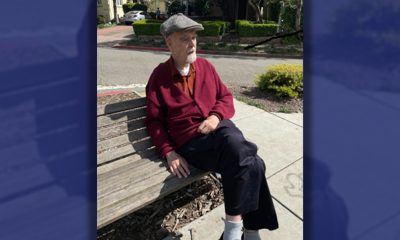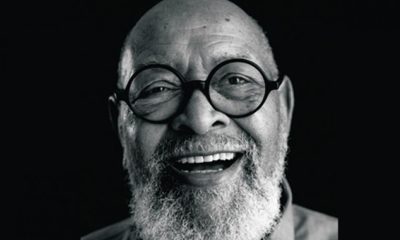#NNPA BlackPress
Discussion Spotlights Vagaries of the Criminal Justice System and Media Complicity
NNPA NEWSWIRE — On a recent afternoon, a distinguished group of panelists spent almost two hours in a conversation exploring the Central Park Five case, the public furor, the effects on the defendants and particularly, the role local and nation media played in creating and driving the narrative. The panelists were participating in a monthly series called “What’s the Story? Criminal Justice and Local News” hosted by The Marshall Project. The discussions feature prominent Americans looking at how to create and disrupt narratives around criminal justice. The series is sponsored by the Public Welfare Foundation.
By Barrington M. Salmon, NNPA Newswire Contributing Writer
@bsalmondc
Ava DuVernay’s searing and powerful Netflix miniseries “When They See Us” has reignited a often rancorous debate about criminal justice, its deeply exploitative nature, the embedded systemic racism and who’s most affected.
As more than 25 million people watched the four-part series recently, America’s penal system came under intense scrutiny from supporters of the penal status quo, those seeking radical reform, and a growing number of critics who’re calling for abolition of the entire system.
On a recent afternoon, a distinguished group of panelists spent almost two hours in a conversation exploring the Central Park Five case, the public furor, the effects on the defendants and particularly, the role local and nation media played in creating and driving the narrative. The panelists were participating in a monthly series called “What’s the Story? Criminal Justice and Local News” hosted by The Marshall Project. The discussions feature prominent Americans looking at how to create and disrupt narratives around criminal justice. The series is sponsored by the Public Welfare Foundation.
In 1989, Yusef Salaam, 15, Kevin Richardson, 14, Korey Wise, 16, Antron McCray 15, and 14-year-old Raymond Santana, Jr. were falsely convicted of the brutal rape and assault of Trisha Emili, a white investment banker. The boys spent between seven and almost 14 years in prison.
Salaam, one of the Exonerated Five and a panelist who discussed the media’s role in the notorious Central Park Five case, said bluntly during the question-and-answer section that the criminal justice system must be abolished. He comes from a unique perspective, having spent seven years in prison for a crime he didn’t commit.
“The criminal justice system needs to be dismantled,” Salaam told a rapt audience at Google headquarters in downtown Washington, DC during the July 16 discussion. “The slave trade moved right into the criminal justice system which runs us down, jails us, kills us. The Central Park Five is one worm out of a can of worms … it definitely needs to be abolished.”
He is not alone.
All over the country, individuals, groups and organizations like Color of Change and BYP 100 Chicago are working for and demanding change; imagining a just, vociferously challenging the conventional wisdom around crime and punishment; organizing, mobilizing the public to vote for reformist district and state attorneys and voting out prosecutors like Anita Alvarez in Chicago and Robert McCullough, both who refused to prosecute the cops who killed Lauan McDonald in Chicago and Michael Brown in Ferguson, Missouri.
What was soon very clear is what is already known: that the vast majority of the 2.3 million people entangled in the criminal justice system are Black and brown people and increasing numbers of non-white children and Black women. Although the United States comprises less than 5 percent of the world’s population, it has the dubious distinction of having 25 percent of the world’s people behind bars, well ahead of China, India and Russia. In addition, about 7 million formerly incarcerated individuals are under the control the prison system whether it’s probation, parole or some form of monitoring and surveillance.
The miniseries – which recently received 16 Emmy nominations – details the harrowing experience of these young boys’ childhoods which was snatched by an over-zealous district attorney, police investigators who played hard and fast with the rules and a relentless criminal justice system which has and continues to swallow up Black girls, boys, men and women. Spurred on by District Attorney Linda Fair stein, cops subjected the boys to between 14 and 30 hours of interrogation, pressure and manipulation, eventually coercing confessions from them. They were eventually exonerated for the crime in 2002 when Matias Reyes, a serial rapist, confessed and DNA evidence taken from the victim confirmed he was the assailant. The charges were completely vacated and in 2014, the five men were awarded $41 million from the city although city officials never admitted culpability.
“It was tremendously dangerous, devastating and overwhelming at the same time,” Salaam recalled. “400-plus articles were written in the first two weeks. I remember seeing video. Our innocence got little or no attention. It was a whisper. I remember hearing my mother ask if the rats could hear.”
“The damage was done to us. They pulled the fabric and left gaping holes.”
LynNell Hancock, a former New York Daily News reporter, said she feels mortified when she recalls what transpired.
“It’s really hard to see,” she said after watching a clip showing the skewed racist coverage and bloodlust on television and in the newspapers. “I feel overwhelmed with shame. Every time I see it, I wonder what it felt like for Yusef and his family.”
Hancock, director of the Spencer Fellowship for Education Journalism, a program that supports the work of mid-career journalists to study at Columbia and produce significant works of journalism on education topics, said she was transitioning from the Village Voice to the Daily News when the story broke and watched as editors and reporters competed to be a part of what became a huge story.
“Going to the Daily News was like going to another planet,” she recalled. “The Village Voice was a writer-driven newspaper. The Daily News was a hothouse with a lot of competitive, mostly white men, a lot of great reporters and intelligence. It was an editor-driven paper, very controlled from the top and they decided early one to embrace the narrative of the police.”
Salaam, a motivational speaker, activist and educator, said the detectives who investigated the rape and beating of the jogger made sure that he and the other four were set up to take the fall in a case that riveted and angered New York City’s primarily white residents.
“… Our only crime was that we were born Black and brown. In the US we are expendable and are supposed to be at the bottom. They abolished slavery but they had a loophole – prison,” he said. “In our jury pool and the judge, the bias (towards us) was coming through the lens of the media and the police department. The Manhattan North detectives who interrogated had to have been on the force for at least 20 years to be in that unit. These were individuals who should have known better, should have done better.”
Despite signing confessions, Salaam said there were glaring inconsistencies as well as the absence of physical, forensic and DNA evidence which the current climate would have easily uncovered.
“All kinds of inconsistencies were there,” Salaam explained. “If we had social media then, it (the case) would have been blown out the water. Social media would have brought the inconsistencies out.”
Salaam said had no idea when he picked up by police officers that his life was about to change in irreversible and irreparable ways.
“My mother said she was born in the Jim Crow south and told me never to talk to cops, to let them kick the door down,” he said wit a wry smile. “(But) as a 15-year-old, I thought I was old enough to talk to the cops. I thought I’d be home before my mom got home. But I ended up spending seven years in prison.”
“Corey wasn’t on the list but he went with his buddy and ended up serving 13 years. Yet in the whole midst of things, he became the magic piece that freed us. I bumped into members of the original Black Panther Party and the Black Liberation Army. It informs how I teach children.”
Norris West, the Annie E. Casey Foundation’s director of Strategic Communications and a former journalist with the Baltimore Sun and Toledo Blade, said he has seen several instances of police chiefs and departments creating a negative narrative to paint all Black men as criminals.
“I grew up in Philadelphia and Chief (Frank) Rizzo weeded Black cops out of his force,” West recalled. “He made Black men strip naked in the street. There was a climate created and a narrative advanced. He stripped away their humanity before removing their clothing. It didn’t happen in a vacuum. The media plays a part in this.”
“The media often paints with a broad brush. And more often than not, white people have a different way of looking and writing about Black people.”
Hancock said she is troubled that no one seems to have learned from the egregious miscarriage of justice.
“I thought the exoneration would cause a tsunami all up and down the ranks of newspapers and police departments etc.,” said Hancock, a reporter and writer specializing in education and child and family policy issues, who has taught journalism at Columbia University’s Graduate School of Journalism since 1993. “There has been no self-examination. I didn’t remember how young you guys were. It wasn’t primary but it should have been.”
“I know more about how false confessions happen.”
Hancock said as many as 40 percent of false confessions are from juveniles.
“You guys looked tall and looked like adults,” she said to Salaam. “Wilding had a life of its own in the media, in policy and academia. They began using kids’ names, there was the super-predator narrative and born out of this was a new breed of criminal juveniles and fear took over.”
Every single state in the country began passing draconian laws to imprison primarily Black children, trying teens and preteens as adults, Hancock said.
“Now, they know it’s been very damaging. It’s being rolled back but the damage is already done.”
#NNPA BlackPress
LIVE! — ASK ALMA — TUES. 5.30.23 7PM EST
This week, guest host Leah Farmer King and her panel share tips and advice to reader mail. Leah and the panel, along with the …
The post LIVE! — ASK ALMA — TUES. 5.30.23 7PM EST first appeared on BlackPressUSA.

This week, guest host Leah Farmer King and her panel share tips and advice to reader mail. Leah and the panel, along with the …
The post LIVE! — ASK ALMA — TUES. 5.30.23 7PM EST first appeared on BlackPressUSA.
#NNPA BlackPress
LIVE! — ASK ALMA! — TUES. 1.9.24 7 PM EST
HAPPY NEW YEAR! Welcome back for our first show of the year! This week, Alma and her panel answer viewer mail. As always …
The post LIVE! — ASK ALMA! — TUES. 1.9.24 7 PM EST first appeared on BlackPressUSA.

HAPPY NEW YEAR! Welcome back for our first show of the year! This week, Alma and her panel answer viewer mail. As always …
The post LIVE! — ASK ALMA! — TUES. 1.9.24 7 PM EST first appeared on BlackPressUSA.
#NNPA BlackPress
LIVE! — ASK ALMA! — TUES. 1.30.24 7PM EST
Think you’re the only one with problems? Each week, NNPA advice columnist Alma Gill, along with her panel of guest advisors …
The post LIVE! — ASK ALMA! — TUES. 1.30.24 7PM EST first appeared on BlackPressUSA.

Think you’re the only one with problems? Each week, NNPA advice columnist Alma Gill, along with her panel of guest advisors …
The post LIVE! — ASK ALMA! — TUES. 1.30.24 7PM EST first appeared on BlackPressUSA.
-

 Community2 weeks ago
Community2 weeks agoFinancial Assistance Bill for Descendants of Enslaved Persons to Help Them Purchase, Own, or Maintain a Home
-

 Activism4 weeks ago
Activism4 weeks agoOakland Post: Week of April 3 – 6, 2024
-

 Business3 weeks ago
Business3 weeks agoV.P. Kamala Harris: Americans With Criminal Records Will Soon Be Eligible for SBA Loans
-

 Activism3 weeks ago
Activism3 weeks agoOakland Post: Week of April 10 – 16, 2024
-

 Community3 weeks ago
Community3 weeks agoAG Bonta Says Oakland School Leaders Should Comply with State Laws to Avoid ‘Disparate Harm’ When Closing or Merging Schools
-

 Community2 weeks ago
Community2 weeks agoOakland WNBA Player to be Inducted Into Hall of Fame
-

 Community2 weeks ago
Community2 weeks agoRichmond Nonprofit Helps Ex-Felons Get Back on Their Feet
-

 Community2 weeks ago
Community2 weeks agoRPAL to Rename Technology Center for Retired Police Captain Arthur Lee Johnson


















































